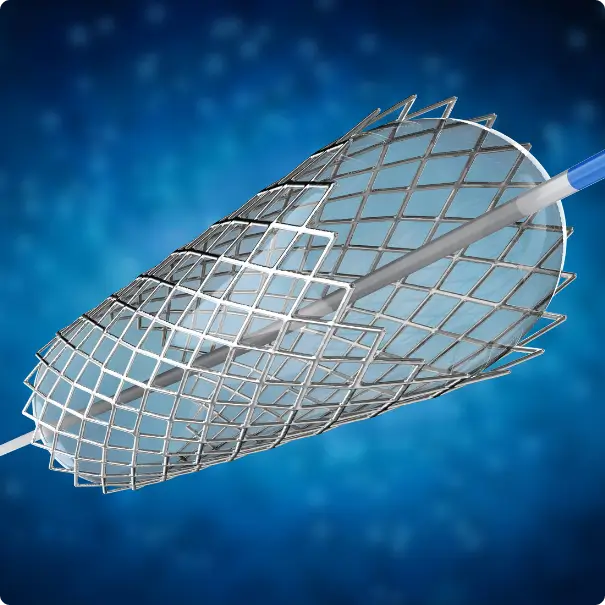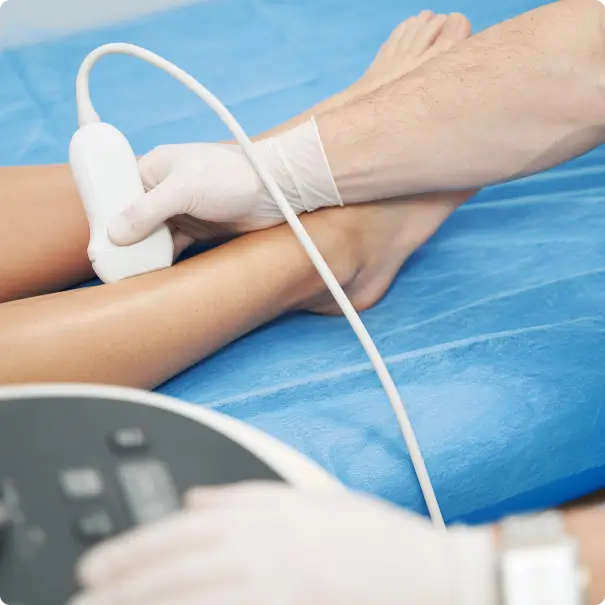Treatment Options
Vascular Diagnostics & Treatment
Glendale Vascular offers comprehensive diagnostics and treatment options to effectively manage a wide range of vascular conditions.

Vascular Surgery Operations
At Glendale Vascular, our vascular surgeries are tailored to address a range of vascular conditions. For Peripheral Arterial Disease, we perform open bypass surgery to restore blood flow around narrowed arteries or endarterectomy to remove plaque directly. For Carotid Artery Disease, a carotid endarterectomy removes plaque buildup, reducing stroke risk by improving blood flow to the brain.
Advanced cases of aortic aneurysms are treated through open aneurysm repair, reinforcing the aorta with a graft to prevent rupture. Peripheral aneurysmal disease is similarly managed with vascular bypass or grafting to secure compromised vessels. In deep vein thrombosis cases, we may perform open thrombectomy to remove clots and prevent complications.
For severe lower extremity ulcers, surgical debridement is used to remove damaged tissue, while lower extremity amputation may be necessary to prevent further issues. We also offer varicose vein surgery, such as vein stripping, to relieve discomfort from problematic veins. For Dialysis Access in End Stage Renal Disease, we create arteriovenous fistulas or grafts to ensure reliable, long-term access. Our anterior spine exposure approach provides precise abdominal access for vascular conditions near the spine, supporting complex treatment needs with minimal disruption. Each surgery is carefully selected to improve vascular health and patient well-being in accordance with the underlying vascular condition and symptoms.
Endovascular Procedures
The surgeons at Glendale Vascular, provide minimally invasive endovascular procedures that address a variety of vascular conditions, offering effective treatment with shorter recovery times. For Peripheral Arterial Disease and Lower Extremity Ulcers, we perform balloon angioplasty and stenting, where a small balloon is used to widen narrowed arteries, sometimes followed by placing a stent to keep the vessel open and promote blood flow. In cases of Deep Vein Thrombosis, catheter-directed thrombolysis is used to dissolve clots directly at the site, often combined with mechanical thrombectomy to break up and remove the clot, restoring venous circulation.
For Carotid Artery Disease and aortic aneurysms, we offer carotid artery stenting and endovascular aneurysm repair. Carotid artery stenting involves placing a stent in the carotid artery to prevent stroke by improving blood flow to the brain, while endovascular aneurysm repair uses a stent graft inserted through the femoral artery to reinforce the weakened aorta, avoiding open surgery. Peripheral aneurysmal disease is similarly treated with endovascular stenting to stabilize aneurysms in the limbs, reducing rupture risks.
Our endovascular treatments for varicose veins include endovenous laser therapy and radiofrequency ablation, which close damaged veins using heat energy to redirect blood flow. Endovascular procedures at Glendale Vascular allow surgeons to treat vascular conditions with minimal disruption to surrounding structures. Using a catheter to guide specialized tools, these procedures restore and reinforce blood vessels precisely and efficiently. With the aid of imaging technologies like vascular ultrasound, endovascular treatments provide an effective, minimally invasive solution.


Diagnostic Methods at Glendale Vascular
At Glendale Vascular, our diagnostic approach begins with a thorough physical examination to assess symptoms, check for visible signs of vascular conditions, and evaluate blood flow to affected areas. During this examination, our specialists may palpate pulse points and listen for any abnormal sounds, known as bruits, which indicate disrupted blood flow. This initial assessment allows us to gather essential information and decide on further testing needs, creating a foundation for an accurate diagnosis.
Our primary diagnostic tool is a vascular ultrasound lab, a non-invasive imaging technique that provides a clear view of blood flow and the structure of blood vessels. This ultrasound allows us to detect blockages, narrowing, or irregularities in arteries and veins. Using high-frequency sound waves, vascular ultrasound gives real-time data on circulation, enabling us to pinpoint affected areas precisely and determine the extent of a condition. It’s a cornerstone diagnostic method that’s safe, painless, and highly informative for both patients and specialists.
For a more comprehensive understanding, we also rely on advanced imaging technologies and blood tests. Imaging, such as CT scans or MRIs, can offer detailed visuals of vascular structures, helping assess more complex conditions when necessary. Blood tests complement these methods by revealing markers of vascular disease, such as cholesterol levels or inflammation indicators, which can influence treatment planning. Together, these diagnostic tools ensure that each patient receives a detailed diagnosis, supporting the most effective path to treatment.
Expert Vascular Care
A Proven Approach to
Vascular Care
Our team at Glendale Vascular is here to provide you with compassionate, advanced care every step of the way. Whether you’re seeking diagnosis, treatment, or follow-up support, we’re dedicated to helping you achieve improved vascular health and a better quality of life. Reach out to us today to schedule a consultation and discuss how we can support your journey to wellness.
